Google Introduces Us To Ice Cream Sandwich
by Jason Inofuentes on October 18, 2011 11:06 PM EST- Posted in
- Smartphones
- Android
- Ice Cream Sandwich
- Mobile
When I said it would be a busy fall, I didn’t expect us to be covering two big announcements in one day, or three/four/five, depending on how you choose to count them. Samsung didn’t just show off new hardware, Google was there to show off the new software behind that hardware. Details of Android 4.0 Ice Cream Sandwich have been leaking for some time now but with the SDK published and the event wrapped up we have a better sense of what Google has in mind for the next phase in Android. Let’s get started.
Matias Duarte started off by introducing the audience to Android’s new font, Roboto. Playful though the name is, it is a stylish and elegant font, and while it might not strike the right note for everyone it certainly seems easy to read. It’s featured throughout ICS, including the digital clock on the lock screen which is where we’ll begin. The layout is familiar, and not too divergent in look. In function there’s some new tricks to show off. Swiping the unlock icon to the right takes you to your home screen, though swiping left takes you to the camera app, more on that in a bit. This trick has been seen before, most recently in HTC’s Sense 3.5. New - though perhaps not as revolutionary - is facial recognition based unlock, which Google aptly calls Face Unlock. This was a feature in my Lenovo S10 from several years back, and judging by the demo this implementation may face the same hurdles as that Lenovo, poor lighting leads to poor recognition. This may pan out, though right now it seems like a solution searching for a problem.
The gold standard for notifications systems has been WebOS since its introduction, with Android following close behind. In its latest incarnation the differences are mainly cosmetic and in the addition of a music notification with playback controls and the ability to swipe away individual notifications. These are features that we’ve seen in skinned and modded versions of Android for some time, but welcome nonetheless. What we haven’t seen is the ability to peek at notifications from the lock screen and then go directly into the app that originated the notification upon unlock.
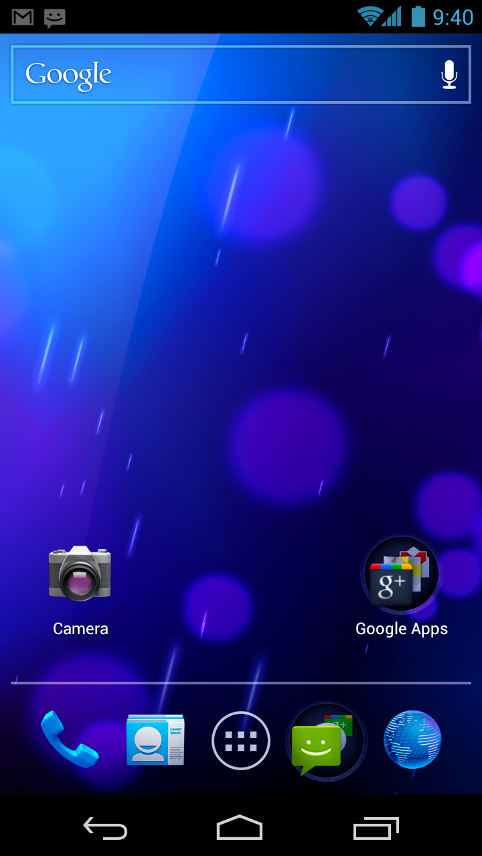
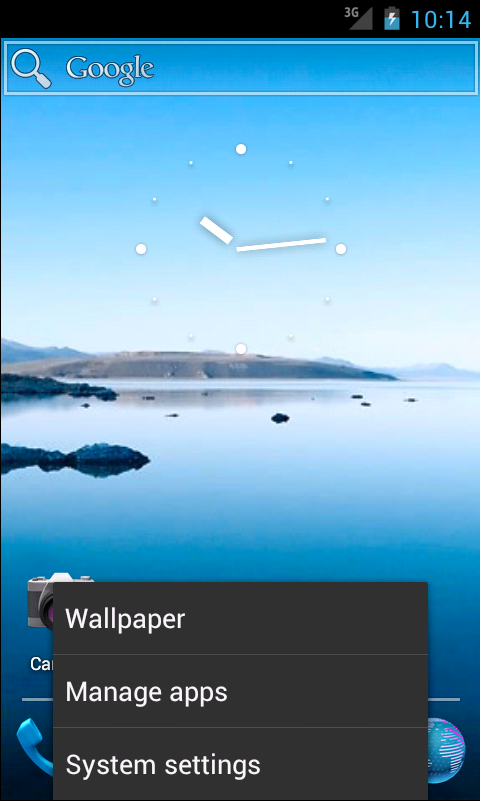
Having unlocked your phone you are now presented with a home screen that looks like a comfortable marriage between Honeycomb and Gingerbread. Honeycomb’s on screen buttons have evolved and are delightfully animated, and though anchored to the bottom or right hand side of the device, depending on orientation, they rotate appropriately. This area is called the System Bar, and will also be home to the Notification shade on tablet ICS devices. Just above the System Bar is the Favorites tray, an evolution of the docks we’ve seen before. Here you’ll find icons for Phone, People, Messaging, Browser and, of course, App Drawer, though it will be highly customizable, even supporting Folders. When you do decide to open an app, the Favorites tray becomes the Action Bar and provides contextual actions for the app you’re in. It can be at the top or bottom of the screen and can change configuration within the app based on context. In the Gmail demo, for instance, they showed how while in the Inbox the Action Bar had buttons to compose a new message, search your messages or access labels. Upon opening or selecting an e-mail, new buttons populate the Action Bar. Adopting the Action Bar will be a key UI element in ICS apps.

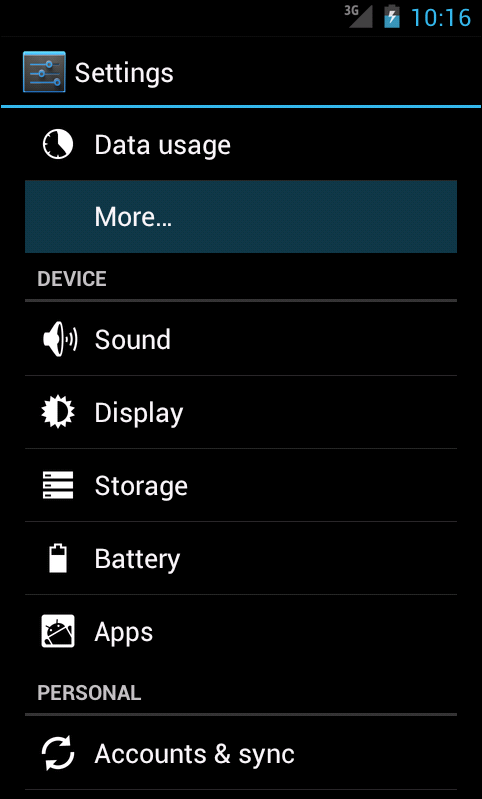
Back to the home screen, Google apps are now resizable and that functionality will be opened up to developers. The familiar home and back buttons are rejoined by the Recent Apps button from Honeycomb. This multitasking implementation looks and works very similarly as in the tablet OS, with the added ability to kill individual tasks with a swipe. This was an oft lamented absence in Honeycomb, as the list of apps could get quite long after several days of use.


Phones are meant as communications devices so Google spent time on the Phone, Messaging and People apps. The People app replaces the Contacts app of old, and is livened up with larger pictures and a lot more data. Opening a contact’s profile reveals the typical list of numbers and e-mails, but it also includes connections through social media, and a swipe to the left reveals an integrated aggregation of that contact’s updates within those networks. They’ve also included a new Favorites tab that introduces a UI concept that we’ll see recurring in Android from now on, and it may look familiar to Windows Phone 7 users. The Favorites tab displays larger high resolution images of your most common contacts in a tightly aligned grid that is described as a ‘magazine style UI’ and bears a striking resemblance to the panels popular in Microsoft’s Metro UI.
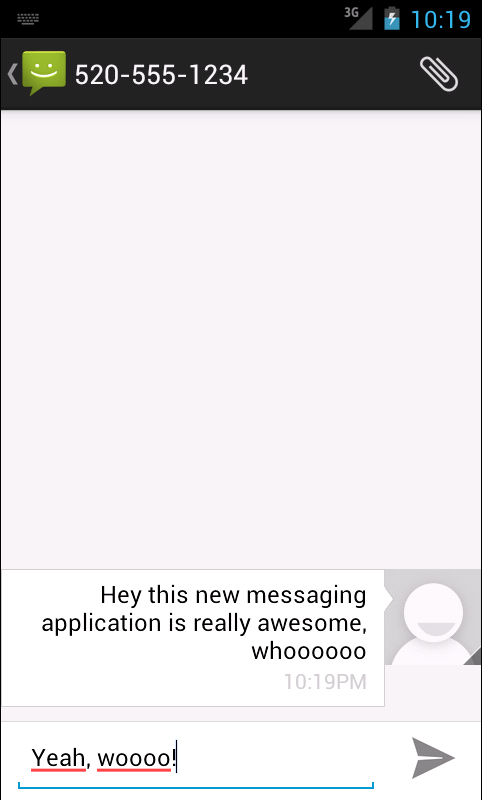

The Phone app has been updated with in-line visual voicemail (through Google Voice) amongst your call log, and a Favorite’s tab, as in the People app, that allows you to call common contacts with one touch instead of opening their profile first. Calling one of your contacts yields a new in-call screen that features a large profile image overlaid with call information and call functions.

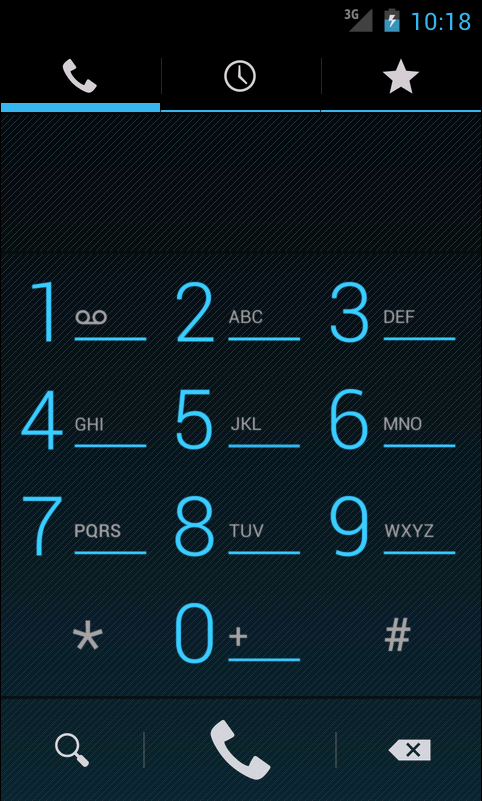
The Messaging app gets its biggest update from the improved keyboard, which has in-line spell check, improved word suggestion with easier to select options, and a refined way to add words to the dictionary. The voice recognition functions of Android have been improved and they’ve implemented an ‘open microphone’ experience that allows you to dictate long messages and insert punctuation, regardless of any pauses you might have while composing. The engine even supports emoticons.
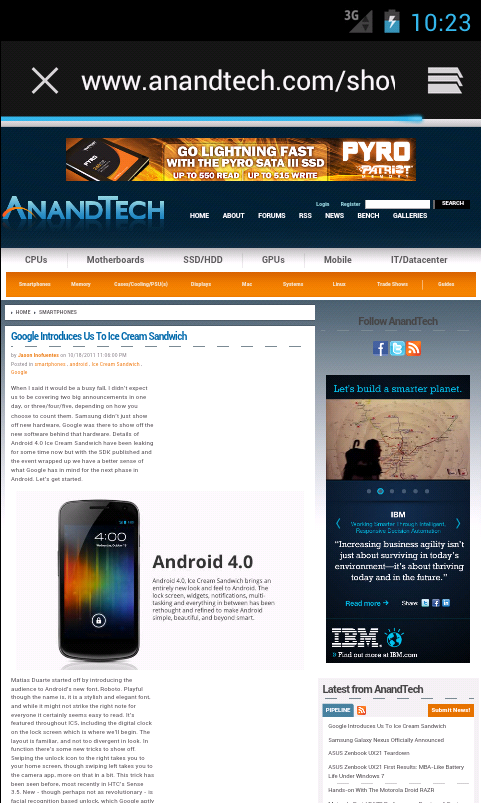
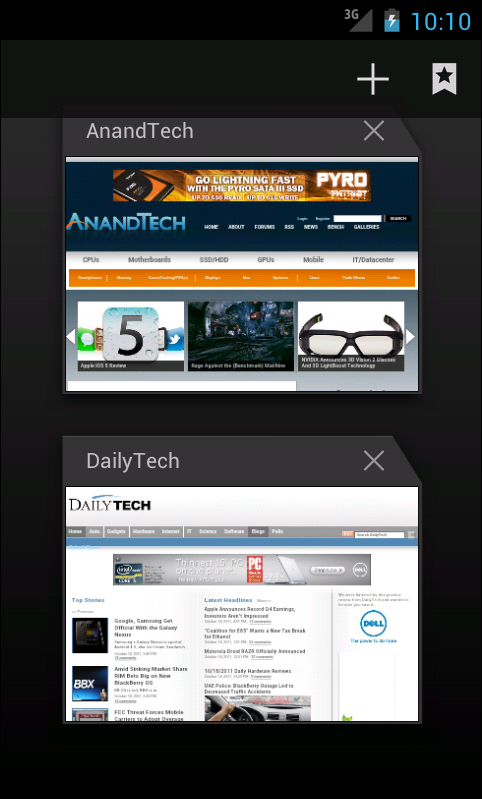
Screenshot of the article, within the article... How meta.
The Browser gets a new ‘Save for off-line reading’ function that is aimed at more than just storing articles, but can include things like boarding passes, and train schedules. It also gets a tab management system that mirrors the Recent Apps function. The stock android browser now also includes incognito mode, which no doubt will be used in conjunction with Flash for lots of scientific research.
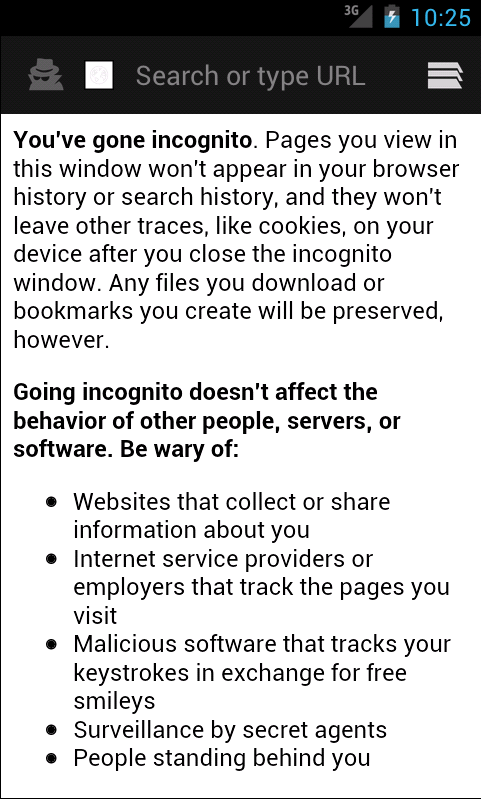

Every browser iteration from Android features performance improvements and this one is no different. Google notes that the stock Android browser gets much improved rendering speed through an improved and updated version of WebKit, and faster JavaScript performance thanks in part to an update to V8's crankshaft JIT engine. Google claims an improvement of 220% in Android 4.0 over Android 2.3 in V8, and 35% faster SunSpider 0.9.1 performance on the Nexus S alone. We look forward to testing out this improved Android browser and seeing what other improvements are lurking inside very soon.
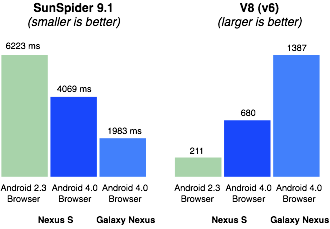
Google's Browser Performance Benchmarks (Courtesy Google)
In the emulator the benefits of this new version of WebKit are readily visible, where Android 4.0's browser scores 230 and 3 bonus points, compared with 177 and 1 bonus point in Android 2.3.5. The new browser also thankfully now exposes a desktop user agent switcher, something that has been missing for far too long from the stock Android browser.
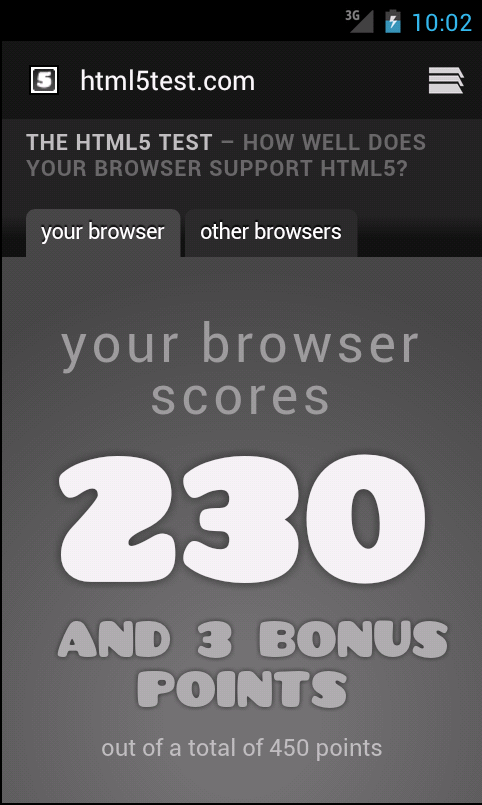
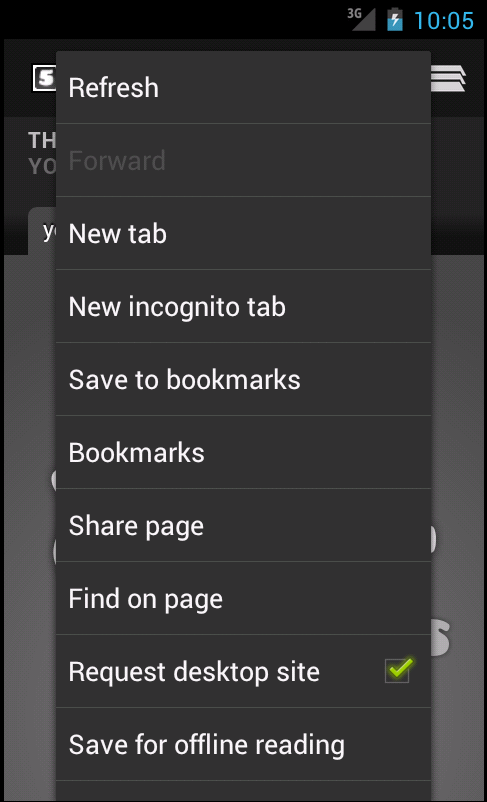
The Calendar app gets a new layout and features pinch to zoom for easily shifting from a broader to a more granular view of your agenda, and back again. They’ve extended the use of the swipe here to allow you to go back and forth between days/weeks/months. This same motion is found in the new Gmail app for browsing through e-mails quickly. And that Gmail app now gets two-line previews along with the other UI changes.
The Camera and Gallery apps have seen much work, and zero shutter lag exposure and a facial recognition function that keeps the image focused on identified faces are among the highlights. For Video the ability to zoom and continuously focus the shot while filming is a boon. And a new panorama mode allows users to easily create long shots with just a single motion, on the device and with a simple on-screen guide. Sharing from the redesigned Gallery app is a two tap affair, and the integrated photo editor allows cropping, rotation, red-eye reduction and the application of filters to captured photos. The Gallery itself is graced with that ‘magazine style UI’ and can be used to build Albums but can also sort pictures by location and faces.
NFC features prominently in Google’s plans with Google Wallet, and gains added functionality with Android Beam, which allows sharing of everything from files to links between two NFC enabled ICS devices.
That was certainly a lot to go through, and there’s no doubt more to cover another time, for now, we can’t wait to get our hands on the Galaxy Nexus to find out what Ice Cream Sandwich feels like in action. And in the meantime we’ll dig around the readily available SDK to see what there is to see. November’s going to be a great month to shop for phones.
Source: Android 4.0 Highlights


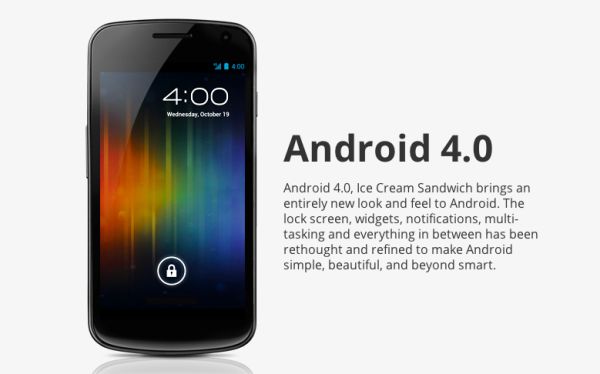
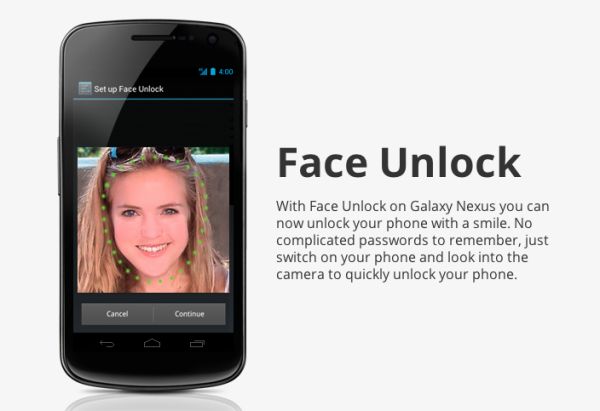

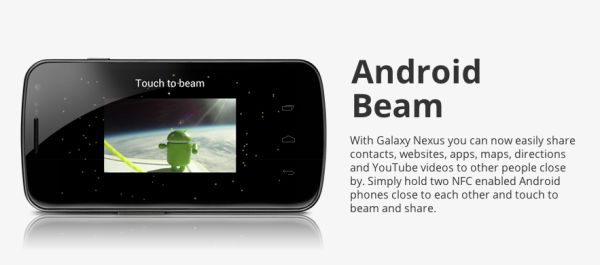














36 Comments
View All Comments
dalcool - Wednesday, October 19, 2011 - link
I can't wait! Glad I held on to my DX. If you have to wait I found a site that has the Ice Cream Sandwich wallpapers. It is formatted for mobile so installing them is easy. It also has a ton of other good wallpapers as well. www.freedroidwallpaper.comDrChemist - Wednesday, October 19, 2011 - link
Is it just me or is the People section with twitter integration and swiping left for all the info and the metro style browser and people area seem awfully identical to Windows Phone 7. Sounds like a lot of people taking from Microsoft then calling them insignificant.InternetGeek - Wednesday, October 19, 2011 - link
This is true. The Roboto font looks a lot like Metro's stock, and many of the designs make you think of Metro all around. Lately, Microsoft doesn't get too much love for innovating. It's the only UI that looks different yet it is hardly mentioned. Quite unfair.Another example, the latest Android market app, might even be stealing the hubs concept from Metro.
DrChemist - Thursday, October 20, 2011 - link
I even noticed the douche that is in control of Android design make fun of metro style like Windows phone as junk and childish. He even mentions that metro detracts from the information the user needs. Yet they use it for theirs. Plus metro is made to focus only on the information at hand to get in, do what you need, and get out, fast.When is everyone going to see that Apple and Google is no different than Microsoft was 8 yrs ago. They just are in it for the money and don't care about anything else. Yet people love Apple and Google like it is the spoken word of God when they come out with something (Apple more so).
Just my 2 cents.
Mugur - Wednesday, October 19, 2011 - link
I wonder what will be the availability (if any) for existing phones and tables...twjr - Wednesday, October 19, 2011 - link
My table already has more than sufficient availability to ice cream sandwiches.sleepeeg3 - Wednesday, October 19, 2011 - link
lol good1marvdmartian - Wednesday, October 19, 2011 - link
Too bad Google doesn't license with Eddie Murphy to use his material:http://www.youtube.com/watch?v=2JfMCBh1sJQ
(NSFW, for language)
phoenix_rizzen - Wednesday, October 19, 2011 - link
Sony Ericsson Xperia 2011 phones are supposed to be getting Android 4.0 before the New Year.I'm torn ... should I root the Xperia Pro and play around with the Cyanogenmod nighties with 2.3.x ... or wait for 4.0.0 to arrive?
sigmatau - Wednesday, October 19, 2011 - link
I'm guessing it is the same for all US versions as my AT&T GS2 has the NFC built into the battery. The AT&T sales reps didn't even know about it. I was wondering what would be the use of it other than making purchases.